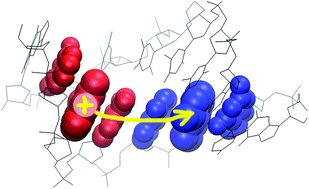
Different computational approaches often predict varying degrees of charge delocalisation. The commonly used mean-field method often exaggerates the degree to which charge is spread out, because of the self-interaction error inherent to DFT modeling. The surface-hopping method used in this study, however, does not suffer from such difficulties and treats transitions between charge states as distinct jumps between states.
Check out the full details of this exciting article:
Efficient algorithms for the simulation of non-adiabatic electron transfer in complex molecular systems: application to DNA
Tomáš Kubař and Marcus Elstner
DOI: 10.1039/C3CP44619K










